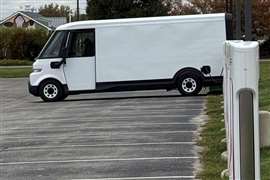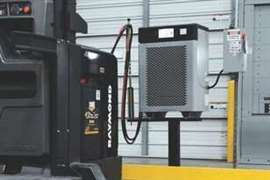What’s happening at HydraForce?
10 October 2023
HydraForce looks to the future as part of Bosch Rexroth
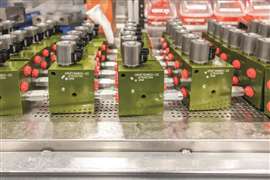 (Photos: Bosch Rexroth)
(Photos: Bosch Rexroth)
For corporate mergers and acquisitions to be successful, leadership teams must simultaneously keep customers and employees happy while the delicate balance between historical expectation and future goal is maintained – all while celebrating the initial success and major milestones that occur after the official documents are signed.
Bosch Rexroth completed its acquisition of Lincolnshire, Ill.-based HydraForce Inc. on February 3, 2023, finalizing a move that was announced in July 2022. On that date in February, associates around the world celebrated Day 1. In May, the company marked Day 100 by presenting its associates with a roadmap to the future. It included an integration plan and its organization and business strategy. The goal was to provide a clear picture of how the operation would operate internally and within the markets it served – all under the slogan of “together even stronger.”
Moving as one team
One word can sum up HydraForce’s strategy: delight. It has appeared in its mission statement for years and was carefully preserved following the merger: “We move as one team to delight our customers with powerful compact solutions.”
“We’ve painstakingly chosen each of the words in our mission to purposefully guide us to do great things for our customers,” said Frank Hess, head of the Compact Hydraulics business unit of Bosch Rexroth. “‘We move as one team’ – this movement is a core set of Bosch Rexroth and Compact Hydraulics – and to ‘delight our customers’ really puts the customer in the center by supporting them with our ‘powerful compact solutions.’”
To the company’s leadership and its carefully selected team of consultants, the word “delight” was considered a key element of the HydraForce brand as well as its heritage. Most importantly, they saw the goal of delighting the customer as something every associate could contribute to, whether it was by delivering the best quality, technology, delivery times or support.
“It’s something for which every individual in every function can say, ‘How can I delight the customer today?’ Directly or indirectly, there are many ways to contribute to that goal, and it was important for us to continue that,” said Hess. “The word is a nod to the DNA of HydraForce, and so many of our associates were excited to see it in the mission statement.”
 Frank Hess, head of the Compact Hydraulics business unit of Bosch Rexroth
Frank Hess, head of the Compact Hydraulics business unit of Bosch Rexroth
HydraForce brand
Today, HydraForce is a brand under the Compact Hydraulics business unit of Bosch Rexroth. Collectively, the business unit employs 3900 people at plants in the United States, Brazil, China, Germany, Great Britain and Italy. Its leadership team is comprised of managers from Bosch Rexroth and HydraForce and led by Hess, a 20-year veteran of Bosch Rexroth. The business unit will operate from its current headquarters in the Chicago surbub of Lincolnshire and Nonantola, Italy – formerly the home of Oil Control Group S.p.A., a hydraulics specialist picked up by Bosch Rexroth in 2005.
“We have kept the HydraForce brand because we strongly believe the brand already indicates the way forward,” said Hess. “As an innovation leader, we need to incorporate electronics with sensors and software to meet the customer requirements and the trends of our market. It’s moving more and more toward automized functions as well as more preciseness and operator comfort. Therefore, you need to have the ability to work with electronics and sensors and combine it in a compact hydraulic solution.”
While Bosch Rexroth already offered a wide range of compact hydraulic components and systems, it was primarily interested in the expertise HydraForce had developed with mechanical and electrical cartridge valves and hydraulic integrated circuits for mobile equipment markets. With continued growth expected for these systems, Bosch Rexroth said the Compact Hydraulics business can now help it meet or exceed those predictions.
“HydraForce is a critical addition to Compact Hydraulics,” said Hess, “bringing with it a team with phenomenal expertise, an expansive product portfolio and a well-developed distribution network, particularly in North America. We are working diligently to leverage the best of both organizations. Together, we can offer an expanded portfolio of products, better access to these products through our extensive combined distributor network, greater innovation and even higher quality.”
For their part, Hess said employees “will have the opportunity for growth and the many learning opportunities that a larger organization can bring. HydraForce employees have historically benefited from private ownership and that remains the case. As a long-term thinking, privately held corporation, Bosch Rexroth offers stability and security.”
It’s a merger
Along with the words of the company’s mission statement, Hess is also careful to select the right word to describe the relationship between Bosch Rexroth’s Compact Hydraulics business unit and HydraForce.
“It’s a merger,” he said, “because we’re really operating at eye level. We will maintain the strengths of HydraForce and bring two strong companies together. For me, as CEO, it’s important that my leadership team and I leverage those strengths and take care that we become one united team and one united operation, and to ensure it is more of a collaboration. We need to leverage our strengths to generate more value to our customers, and that is something we cannot do with two separate approaches.
“Fortunately, we have a similar understanding of the business, and we were working in the same markets with more or less the same tools. And we had a very, very good understanding of the technology, innovation and solutions that are required for the future.”
One of strengths of HydraForce that Bosch Rexroth most admired is its approach to customer support. That’s something the Compact Hydraulics business unit is keen to maintain and even adopt across the other areas of its business.
“I want our organization to know and deeply understand our customers’ business and be able to effectively support our customers’ growth,” said Hess. “To enable this, organizationally, I believe we must build in a strong go-to-market approach and retain, strengthen and grow our sales and application engineering function.”
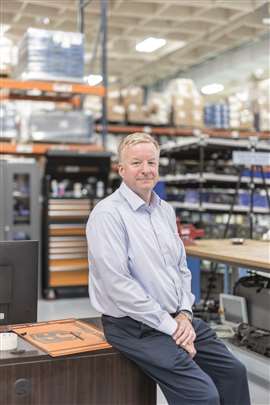 Tim Bankhead, application engineering manager, HydraForce
Tim Bankhead, application engineering manager, HydraForce
Collaborative application engineers
When Tim Bankhead joined HydraForce 12 years ago, he brought with him experience he had gleaned as an engineer for an aerial lift manufacturer and a supplier of plastic machinery. HydraForce was a small organization at the time. “We have grown so much since then,” he said. “It’s amazing.”
Today, Bankhead is application engineering manager and works directly with the full range of the company’s accounts, including its fluid power distributors and OEM customers.
“Our application engineering team makes HydraForce very powerful and well-known in our industry. We have a very large applications group, especially when you consider the size of the company, but it’s necessary when the solutions you’re dealing with are custom,” said Bankhead. “HydraForce has been very good at adapting its level of service to meet the needs of the customer so that we’re easy to do business with. We’re so customer oriented that we tend to mold our internal procedures to give that flexibility.
“This company was founded with that customer focus, and it grew to be the market leader. Bosch Rexroth wants to maintain that.”
Larger parts catalog
The secret to being a good application engineer is having a deep understanding of the components available from which a system can be developed. For Bankhead’s group, the merger meant the size of that catalog has been expanded by several volumes.
“When our application engineers found out about the merger, they pretty quickly got excited about it because they’re getting a bigger toolbox,” said Bankhead. “Add to that the fact that there’s so much synergy within the Compact Hydraulics business unit, and it’s all very positive.
“For our application engineers, this acquisition will help them solve the next generation of problems for our industry in ways we would not have been able to do if we hadn’t joined forces. It makes us more powerful.”
At the same time, Bankhead expects the team to maintain some independence from its parent company’s extensive product offering because of the nature of the markets it serves.
“We’ve always had an independent application and sales team, and Compact Hydraulics is planning to maintain that. The reason for that is because we’re really offering a unique product. We’re offering custom solutions, not something that’s already coming off the assembly line. We do that because our customers want to provide value to their customers by developing a machine that is different from the competition and yet meets the unique requirements of their end users.”
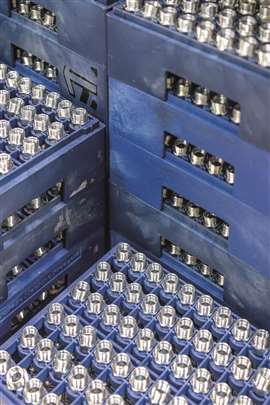 HydraForce has developed an expertise in mechanical and electrical cartridge valves. (Bosch Rexroth photos)
HydraForce has developed an expertise in mechanical and electrical cartridge valves. (Bosch Rexroth photos)
Early in its history, HydraForce recognized that its engineers needed to know everything about the machines they were involved with – going well beyond the hydraulics system – and that is “what led to us to be a leader in this market segment,” said Bankhead. “We have to know about everything on the machine because it all touches something electronically and/or hydraulically and the operators are influenced by what we do. That approach makes us consultative during product development work.
“Bosch Rexroth completely recognizes that. They are as excited about getting into new applications as they are getting the brand and the market penetration.”
HydraForce has evolved with the times, having added its own set of electronics expertise to its resume over the past decade. Bankhead expects the merger to give it an even stronger affiliation with technology borne of automotive and other industries.
“It’s not a challenge of whether the technology exists,” he said. “Because if you look to what these industries have commercialized, they are decades if not several years ahead. The problem is that it often doesn’t translate to the off-highway industry. It needs to be commercialized in a way that fits the environment, in a way that is not cost prohibitive, but yet in a way that allows you to achieve some of the same benefits of the new technology.
“Now we have access to electronics from the Bosch side of the business. We also have some products that we’ve developed because there has been a marriage between hydraulics and electronics that can’t be separated. This merger is a way for us to make sure that we’re working with our customers at their point of work, solving the issues that they’re facing.”
Bankhead said that as the market evolves and machines become more complex, it’s imperative that companies such as the newly shaped Compact Hydraulics business unit of Bosch Rexroth get involved early in the conversation, whether that’s between an end-user and a start-up or an established manufacturer and a distributor or anything else.
“We can help them if they bring us on early,” he said, and “thanks to the merger, we’re going to be able to help them even further in that conversation. We have a lot of internal capabilities, and we’re very vertically integrated in terms of our ability to test and to design.”
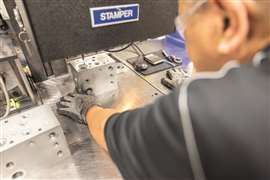 On Day 100, the company’s associates were given a roadmap to the future.
On Day 100, the company’s associates were given a roadmap to the future.
Posters and table stakes
On Day 100, posters were printed and distributed throughout the plant in Lincolnshire and beyond that mapped out the direction of the company and its mission statement. It’s a visual reminder of where the company is headed.
“At the end of the day, if we want to make these goals become true, we need a lot of contributors,” said Hess. “For us, it’s important that our associates start thinking, ‘How can I, as an individual, or with my team, support certain activities’ – such as becoming more resilient in the supply chain? Step by step, we will reach our targets.
“The ultimate goal of Bosch Rexroth and Compact Hydraulics is that we are the number one choice for our customers. We are a technology driven company and we love the challenges which customers give us.
“We want to be the innovation leader in 5 to 10 years accompanied by a highly reliable and resilient supply chain. We want to serve our customers in a sustainable and in a resilient way. And quality, for us, is a table stake. Quality is combined with innovation and this will also be a big pillar for us in the future.”
Sidebar:
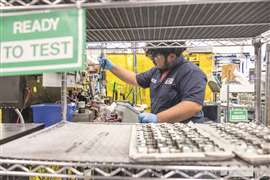 “Quality, for us, is a table stake,” said Frank Hess.
“Quality, for us, is a table stake,” said Frank Hess.
Hydraulic control in a smartphone world
Founded in 1985, HydraForce built its reputation in the global fluid power industry by developing custom solutions for its distributor and OEM customers, each created from an ever-expanded catalog of valves and manifolds.
That work continues. Within weeks of celebrating Day 100, the latest member of Bosch Rexroth’s Compact Hydraulics business unit was at IFPE, the fluid power tradeshow that was co-located with ConExpo-Con/Agg every three years.
Among the new products launched by the company was the Innercept digital proportional control that is complete with a linear variable differential transformer (LVDT) position sensor, which it said combines the flexibility of a five-way proportional hydraulic cartridge valve with the precision of electronic control and the convenience of integrated feedback, provided by the custom-built LVDT.
The company said the name “Innercept” was chosen to convey the benefit of integrating electronics and LVDT technology with its proportional valve for better feedback and control of hydraulic motion.
“We live in a smartphone world, and people want machines that act accordingly. HydraForce recognized that machines are getting smarter,” said Tim Bankhead, application engineering manager, HydraForce, “and there is a need for us to be able to add sensors and make hydraulics more digital and therefore more precise. In most cases in our industry, low technology fits the bill, but on certain parts of a machine, high technology becomes important. Many of our customers have to go outside of our industry for those products, often sourcing something that was traditionally an industrial solution. We’ve incorporated an LVDT into this product in a way that meant we did not have to grossly modify it to create an onboard controller.”
HydraForce said the Innercept line represents its entry into the motion control arena of hydraulics.
“The interesting thing about a product like this is it’s not from us sitting in a cubicle somewhere coming up with a new idea,” said Bankhead. “These come about because of the partner relationship we have with our customers because they have to determine what’s valuable to their customer, the end user.
“As the industry evolves, we must drive that early conversation, and I think the entire industry needs to be more about pulling each other in to solve these problems. We can better solve the problems when we work together. That’s something that needs to change in our industry, and I think it is changing.”
This article was originally published in the September issue of Diesel Progress magazine.
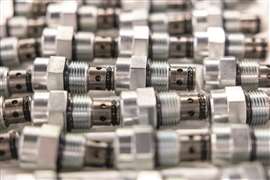 As part of Bosch Rexroth, HydraForce is a critical part of the Compact Hydraulics unit.
As part of Bosch Rexroth, HydraForce is a critical part of the Compact Hydraulics unit.
POWER SOURCING GUIDE
The trusted reference and buyer’s guide for 83 years
The original “desktop search engine,” guiding nearly 10,000 users in more than 90 countries it is the primary reference for specifications and details on all the components that go into engine systems.
Visit Now
STAY CONNECTED




Receive the information you need when you need it through our world-leading magazines, newsletters and daily briefings.
CONNECT WITH THE TEAM










